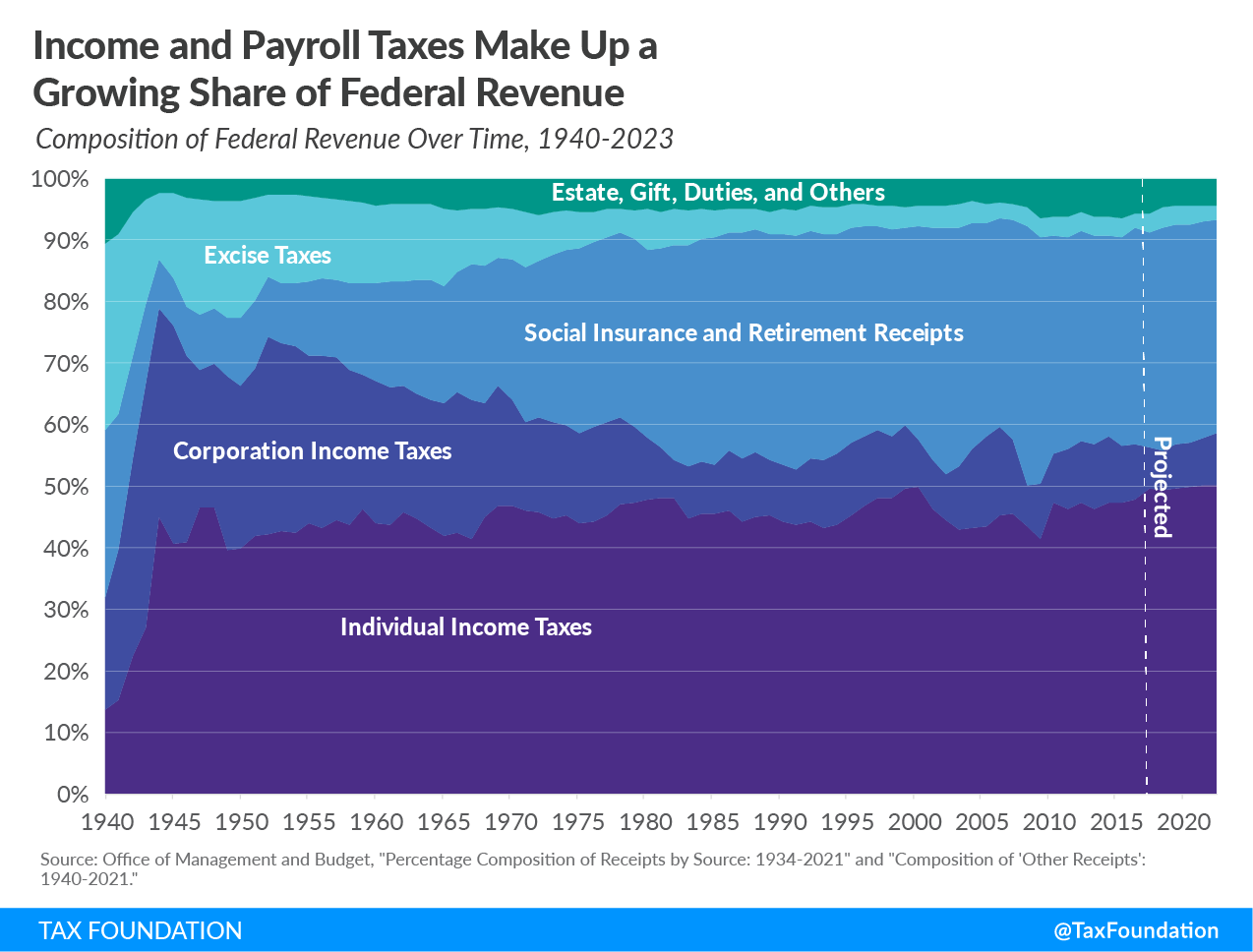Thursday, May 9, 2019
Snapshots of US Income Taxation Over Time
From Conversable Economist:
“As Americans recover from our annual April 15 deadline for filing income taxes, here are a series of figures about longer-term patterns of taxes in the US economy. They are drawn from a series of blog posts by the Tax Foundation over the last few months. The Tax Foundation is a nonpartisan group whose analysis typically leans toward side that taxes on those with high incomes are already high enough. However, the figures that follow are compiled from fairly standard data sources: IRS data, the Congressional Budget Office, and the like.
For example, here’s a figure showing what taxes are the main sources of federal income over time from Erica York. She writes: “Before 1941, excise taxes, such as gas and tobacco taxes, were the largest source of revenue for the federal government, comprising nearly one-third of government revenue in 1940. Excise taxes were followed by payroll taxes and then corporate income taxes. Today, payroll taxes remain the second largest source of revenue. However, other sources have shifted in relative importance. Specifically, individual income taxes have become a central pillar of the federal revenue system, now comprising nearly half of all revenue. Following an opposite trend, corporate income and excise taxes have decreased relative to other sources.”
Posted by at 9:14 AM
Labels: Macro Demystified
Subscribe to: Posts
